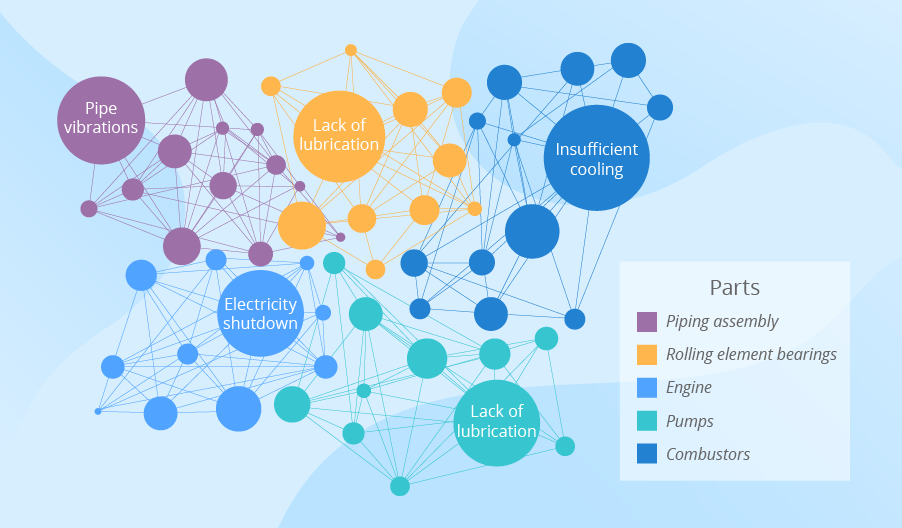Excerpt: Big data visualization is a revolutionary and powerful business capability. Based on an IBM survey, 2.5 quintillion data are produced daily across webpages, social media, sensors, and all management systems. They are producing data every day to control and improve their business processes.
Table of contents:
- Introduction
- Importance Of Visualization
- Main Tools For Big Data Visualization
- Some everyday use cases for data visualization are:
- Techniques Of Big Data Visualization
- Conclusion
Introduction:
Big Data visualization initiatives mix IT and management projects to make the technologies present massive data easily and understandably. The visual representation of data makes it easy to work with massive data and ensures efficiency.
We will discuss the visualization of big data, its related concepts, and its various techniques:
Table of Contents
Big Data Visualization
Today’s companies produce and store vast amounts of information that will take years for an average human to read and understand.
Visualization resources depend on tools for interpreting raw data and processing it to generate a visual representation that enables people to absorb and understand vast amounts of data in a few minutes.
Big Data visualization can describe data of different kinds, such as trigonometric functions, numbers, geometric, linear algebra, basic algorithms, statistical algorithms, etc. The graphical interaction, reports analytics, and coding makes any data easy to understand and interpret.
Hence, Big Data visualization not only uses typical graphs, histograms, pie, bubble plots, and donuts but also works with advanced representations such as heat maps and box and whisker plots, allowing decision-makers of the companies to explore their massive data easily. These visual representations also enable companies to identify correlations and unexpected patterns in their data.
For candidate who want to advance their carrier Informatica Big Data Management Training
is the best option.
Importance Of Visualization
The amount of data produced yearly is growing due to the Internet and innovations like sensors, operational systems, and the Internet of Things (IoT).
Companies need visual representations of their data to get valuable insights from them. They need a technique to extract the correct information from large amounts of data.
Big Data visualization solves companies’ problems by giving them the right extracted data from their vast amounts of data. Big Data visualization techniques are essential for enterprises because they:
- Allows decision-makers to understand their data quickly;
- Finds patterns, correlations, and unexpected connections in the data that generally get ignored because these connections are not very easy to find;
- Capture new trends, which means that Big Data visualization uses the proper techniques that make you understand the new patterns and trends within your organization;
- Provide a seamless way to describe any insight that surfaces to others.
Main Tools For Big Data Visualization
Big Data visualization tools support multiple and vast amounts of data sources and give instant analysis. It enables users to grasp the information through interactive designs and dashboards for identifying trends, correlations, and patterns in the data. The main tools needed to create a decision-making platform are:
- Sisense
- Power BI
- Visual.ly
- Periscope Data
- Zoho Analytics
- Tableau Desktop
- Qlik solution
- IBM Cognos Analytics
- FineReport
- Microsoft PowerBI
- Oracle Visual Analyzer.
Visual.ly tool provides a new way to approach content creation and data visualization for companies. It captures essential and relevant data with visuals for delivering better content. Most of these tools make the analyzing process seamless for decision-makers.
Typical Big Data Visualization Use Cases
Some everyday use cases for data visualization are:
● Sales And Marketing
Research from the market and consumer data provider Statista has estimated that the money spent on digital advertising will go above the $700 billion mark by 2025. Marketing teams focus on their web traffic and web properties that generate revenues. Data visualization makes it seamless to track the marketing efforts that impact traffic trends over time.
● Politics
Data visualization shows which part or region of the country voted for which party. In politics, visual representations help understand a particular party’s popularity, voting trends, and many more.
● Healthcare And Hospitals
Doctors and other healthcare professionals use choropleth maps to visualize crucial health data. Choropleth maps help healthcare professionals to understand a particular variable, like the mortality rate of diabetes, and how it changes across different territories.
● Scientists
Scientific visualization, popularly known as SciVis, enables researchers and scientists to get a better insight from their data of experiments.
● Finance
Finance professionals should check the performance of past investment decisions before buying or selling an asset. Candlestick charts act as trading tools and help monitor price movements over time. These charts display essential data like derivatives, securities, currencies, stocks, commodities, and bonds. The vital information shown by Candlestick charts helps data analysts and finance professionals detect stock market trends.
● Logistics
Big Data visualization tools enable better and more effective shipping. Many shipping companies use visualization representations to find the best global shipping routes.
● Researchers And Data Scientists
Data scientists use visualizations to represent information to a specific audience. They even build visualizations that cater to their needs. They use open-source programming languages like Python to design their visualizations for complex data analysis.
Techniques Of Big Data Visualization
Big Data visualization provides various techniques for achieving a qualitative understanding. Data analysts use different types of techniques for different data. The best technique for a particular company depends on the data available. For instance, a data analyst can use a pie or bar chart to express numerical data.
We have described the most commonly used techniques of data visualization.
1. Line Charts
A line chart is often referred to as a line graph. It is a graphical representation of information. In a graphical form, it shows a fixed value on one side and a variable on the other. A line chart is a beautiful technique to display the relationship of data. It can also show changes and fluctuations of variables during a period.
2. Bar Charts
A bar chart is popularly known as a bar graph. It uses bars to compare various data points or data sets.
Many data scientists and analysts use bar graphs to represent their data analysis visually. A bar chart is mainly used for comparing vast amounts of data, different categories, and fluctuations of quantities.
For example, a tall bar shows a sizeable numerical value, and a short bar displays a low numerical value.
3. Pie Charts
Pie charts are also called donut charts and circle graphs. It represents data divided into many small segments and sizes for their numerical value. Pie charts make it very easy to compare different variables with the sizes of their segments. You can easily understand how one segment is different from others just by looking at it.
You should add only a few variables when making a pie chart because if it has more than seven segments, it can be challenging to understand the essential insights given in the pie chart.
4. Heat Maps
A heat map represents data from a map or table visually. It uses different intensities and nuances of colors to represent the data. Heat maps are best suited for those data that seem never-ending. It helps you to quickly visualize and analyze large amounts of data at a glance.
5. Histograms
A histogram represents vast and complex data visually and graphically. It displays the frequency of a variable through bars. Histograms have many similarities with bar graphs but differ because bar graphs generally give attention to the repeated frequency of numerical data.
6. Scatter Plots
A scatter plot is a visual representation of data that uses dots to show and emphasize the changing values of two or more numeric variables. It represents data on an X and Y-axis.
They can be accommodating if you have large data sets because they can effectively show and compare these large data sets.
7. Treemaps
Treemaps represent hierarchical data through color-coded rectangles visually and interactively.
8. Funnel Charts
Funnel charts are primarily used in the sales and marketing industry. It visually represents sales, and the stages users go through in the sales process. It can display the decreasing values as customers move through the funnel.
It helps you to analyze and monitor the sales process. It can make you understand where you are gaining or losing your customers.
Conclusion
Big Data visualization has been gaining popularity for its visual representation of vast data. It enables companies to change complex and massive information into understandable visual representations. It speeds up the analyzing process for business owners and stakeholders. Big Data visualization uses techniques like histograms, pie charts, line charts, and so on to extract and display essential insights for the companies.
Hence, it is the process of translating information into a graphical or visual context to identify data patterns, trends, and outliers. To conclude, massive amounts of data are produced from different sources; we should visualize it using Big Data visualization techniques.
Visit TheInspireSpy











